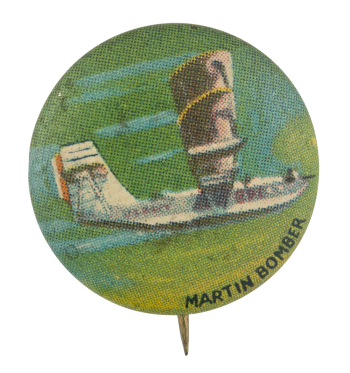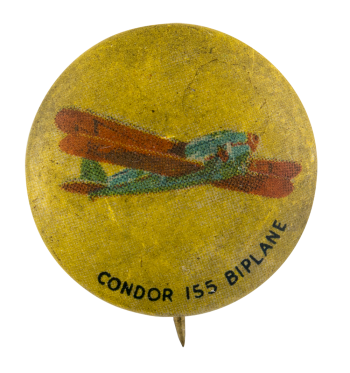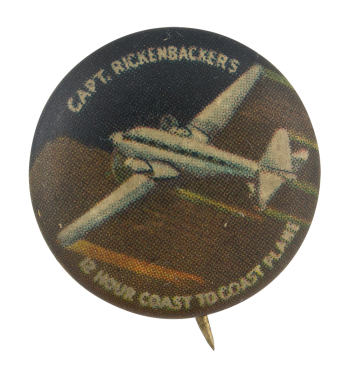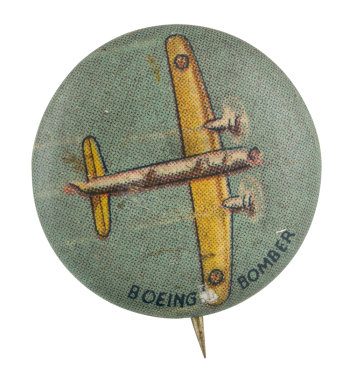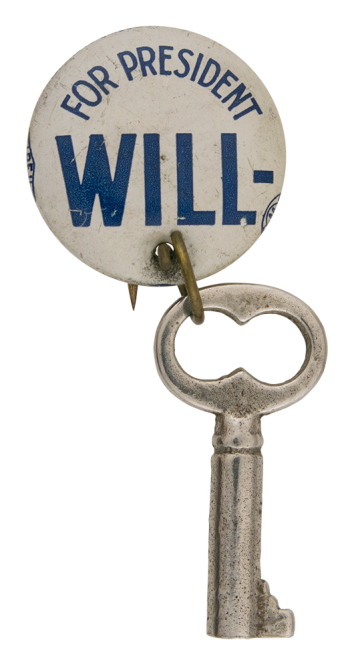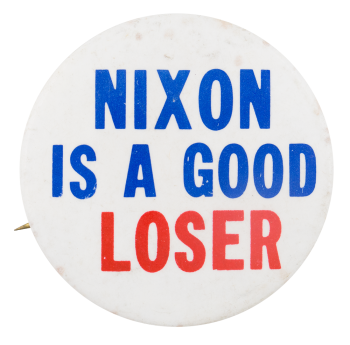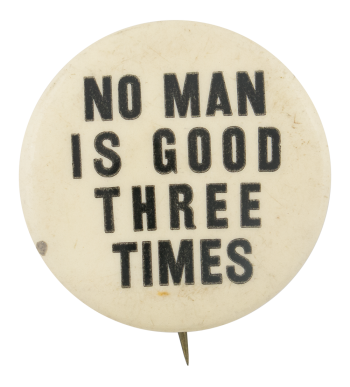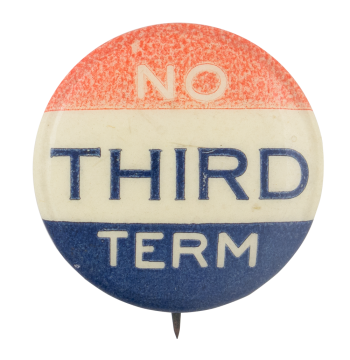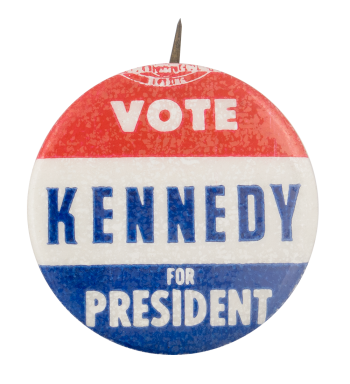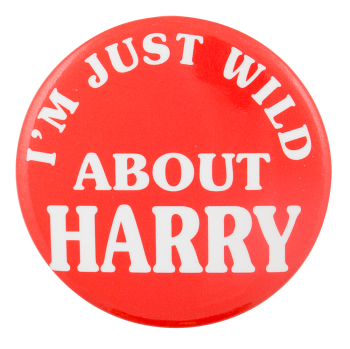Martin Bomber
| Category | |
|---|---|
| Additional Images | |
| Sub Categories | |
| Text on Button | MARTIN BOMBER U.S. NAVY |
| Image Description | Button shows a white single-wing aircraft in flight and dark blue text over a dual-shaded green background. |
| Back Paper / Back Info |
YANK JUNIOR AIRPLANE SERIES RELIANCE MFG CO CHICAGO ILL. |
| Back Style | |
| The Shape | |
| The Size | |
| Year / Decade Made | |
| The Manufacturer | |
| Additional Information | Pilot Glenn L. Martin started his first aircraft company in 1912. It merged with the Wright Company in 1916, but Martin left to form a new company in 1917. The Glenn L. Martin Company made several models of bomber for the U.S. military, including the B-10, B-12, and JRM Mars. The B-10, which went into service in 1934, was noted for its innovations such as rotating gun turrets, enclosed cockpit, and retractable landing gear. The JRM Mars was a type of "flying boat" bomber built for the U.S. Navy that was modified and used as a transport plane during World War II. Martin merged with American-Marietta in 1961 and with Lockheed Corporation in 1995. It is now part of Lockheed-Martin, an aerospace and defense contractor. |
| Catalog ID | AD0464 |

